Suriname, as a country, is a top-quality birding destination, but one that relatively few birders have had the chance to visit. When I added it to my route plans, very late in the process, it did not take me very long to realize that this would be where the Tour would really get down to business, as far as seeing birds was concerned. A quick glance at the country’s checklist, containing well over seven hundred species, showed me that, while some other countries may hold more species, Suriname’s collection contains some quite outstanding varieties and holds its own when compared to any other region. During only four or five days of birding, I tallied thirty-seven Life Birds. While that is not an exceptionally large number, quality surpassed quantity in this case, and that list contains some great birds, including some that I have wanted to see for a very long time.
Most of the birds from this section were seen in one of three general locations: The Peperpot Nature Park, just outside Paramaribo, the western road
, basically along the highway leading to Guyana, or, the Central Suriname Nature Reserve, in the interior of the country. Peperpot, an old coffee plantation now covered with second-growth forest, was an easy place to bird, and a good location for birds that prefer the coastal lowlands. The western road, a highway through a more agricultural region, contained many species that I had previously seen, but was also a very good location for raptors. However, it was the Central Suriname Nature Reserve (CSNR), a large and splendid area of primary rainforest, that held the best prizes. That was where I spent the most time, and if I had even stayed even longer, or moved around a little more, I am sure I would have seen many more nice species. I did feel, however, that the forest there required somewhat more effort to locate the best birds, compared to other topical forests I have visited. I think that may be because many other forests are now smaller fragments of formerly large tracts, which may tend to concentrate the birds. It may be that in the CSNR, with such a large area of undisturbed forest in which to live, the birds are free to disperse more readily.
In this post I will present the birds I observed a little differently than I have done previously. Instead of arranging them chronologically, or geographically, I will order them according to my increasing preference for the images, saving the best for last. I will get things started with a pair of Green Oropendola, which I was pleased to see, since that species was my seventh from that group.
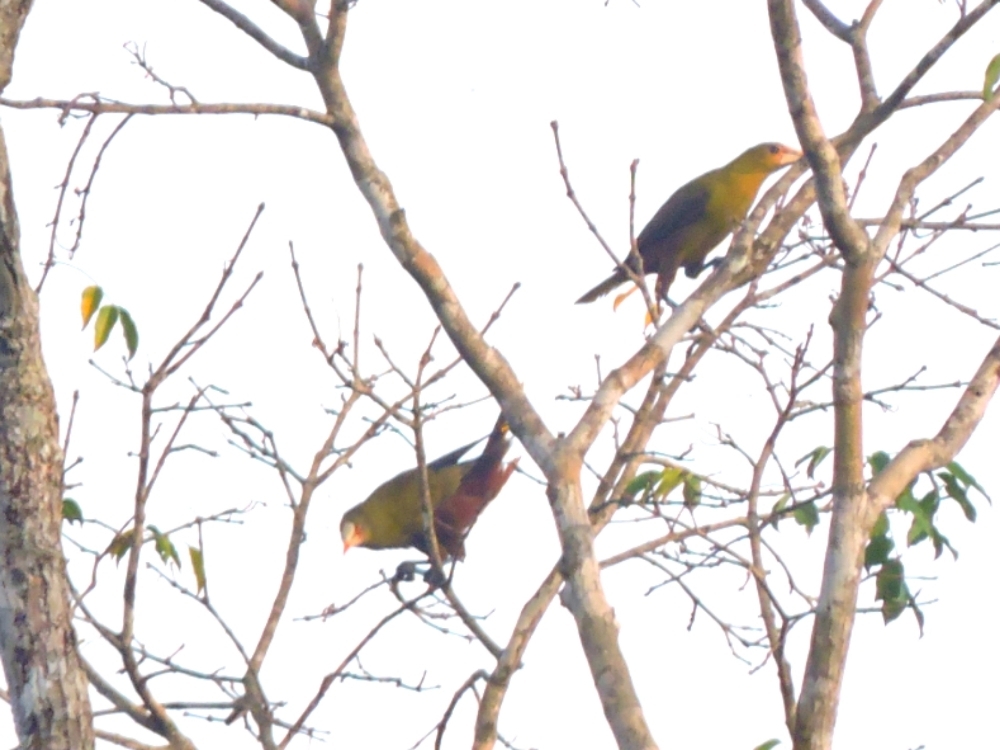
Here is a nice Laughing Falcon, seen along the western road.
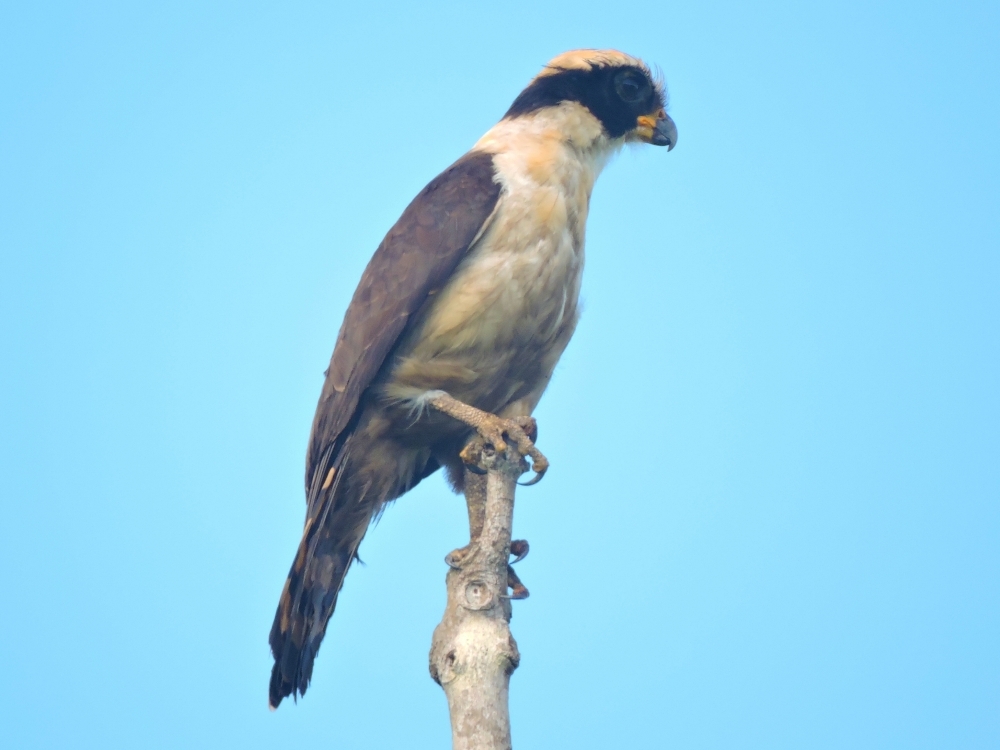
The CSNR also produced Variable Chachalaca...
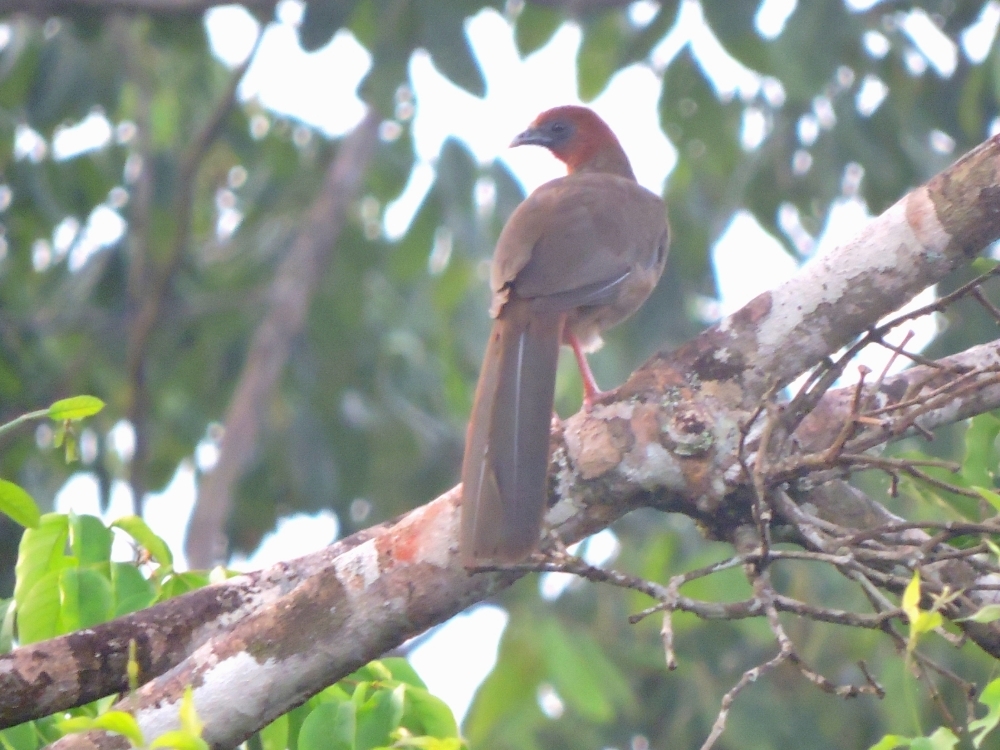
...and Black-Necked Aracari.
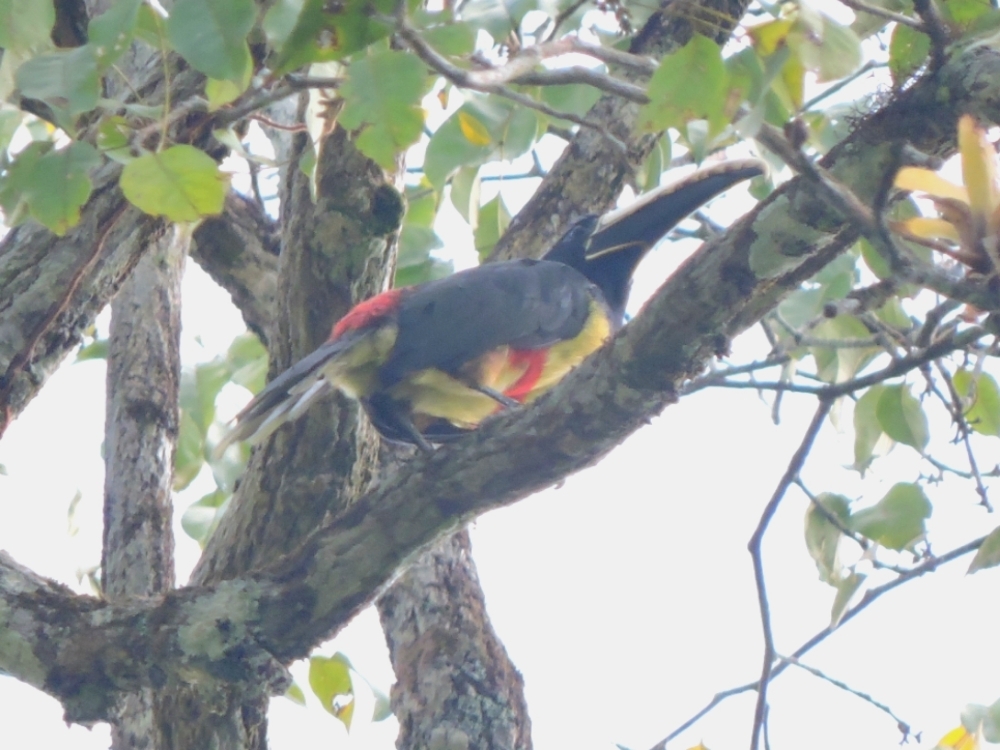
The parrots proved to be the most frustrating at times, flying over in poor light, only to disappear into a random tree somewhere else. It took a little luck for me to finally capture Red-and-Green Macaw, in a tree over one hundred-fifty meters distant.
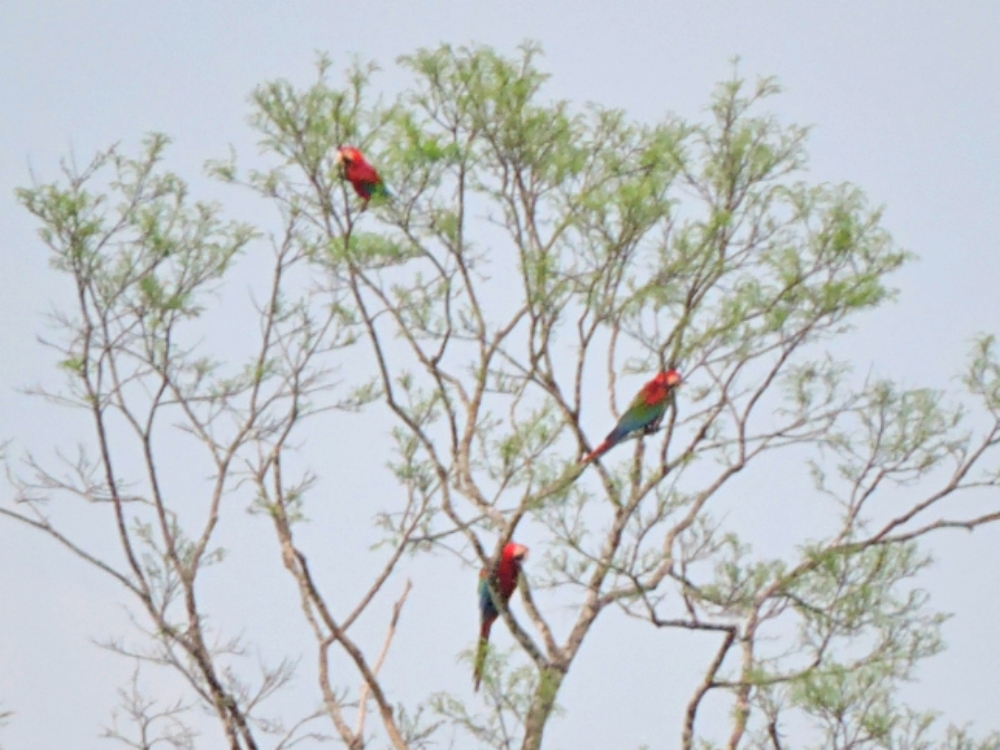
Slender-Billed Kite also made appearances along the western road.
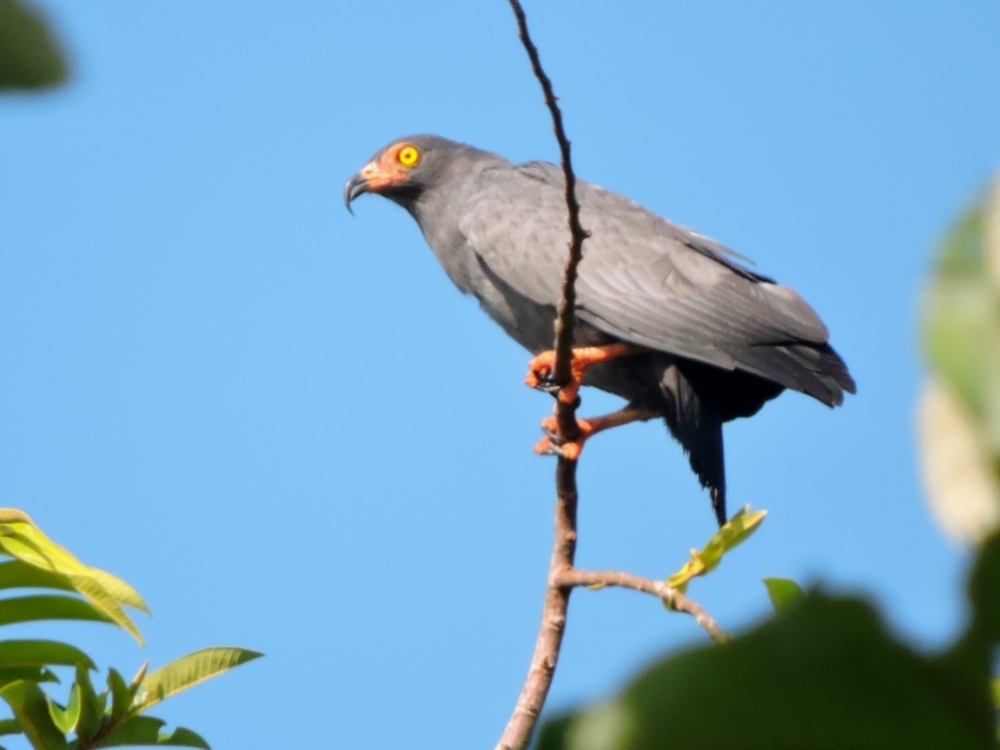
While Black-Barred Woodcreeper turned up at Peperpot.
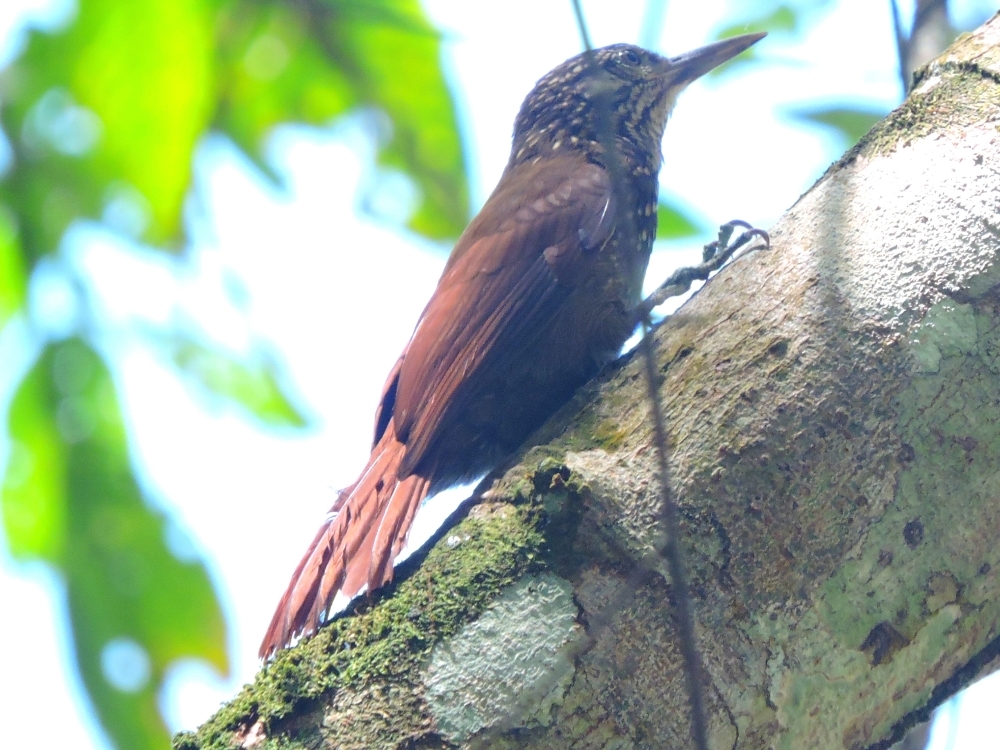
My first sighting of Black Nunbird was made from a moving boat, but I was able to see another later.
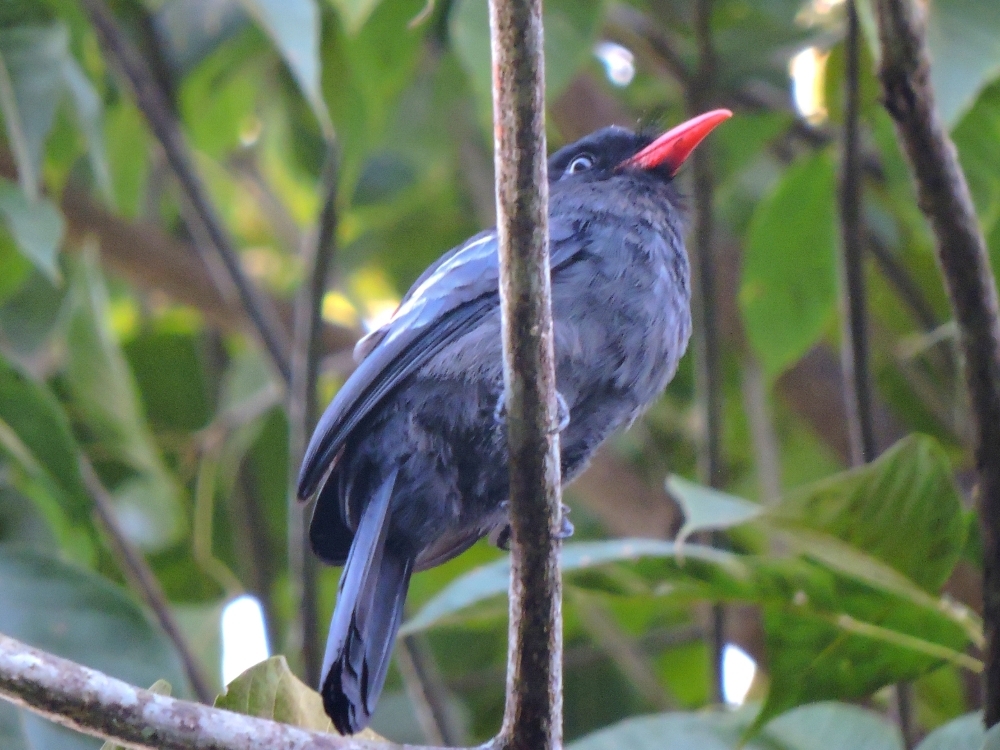
One of Suriname’s near-endemics, Blood-Colored Woodpecker, was easily seen at Peperpot, though they seemed too shy to show their faces for my camera.
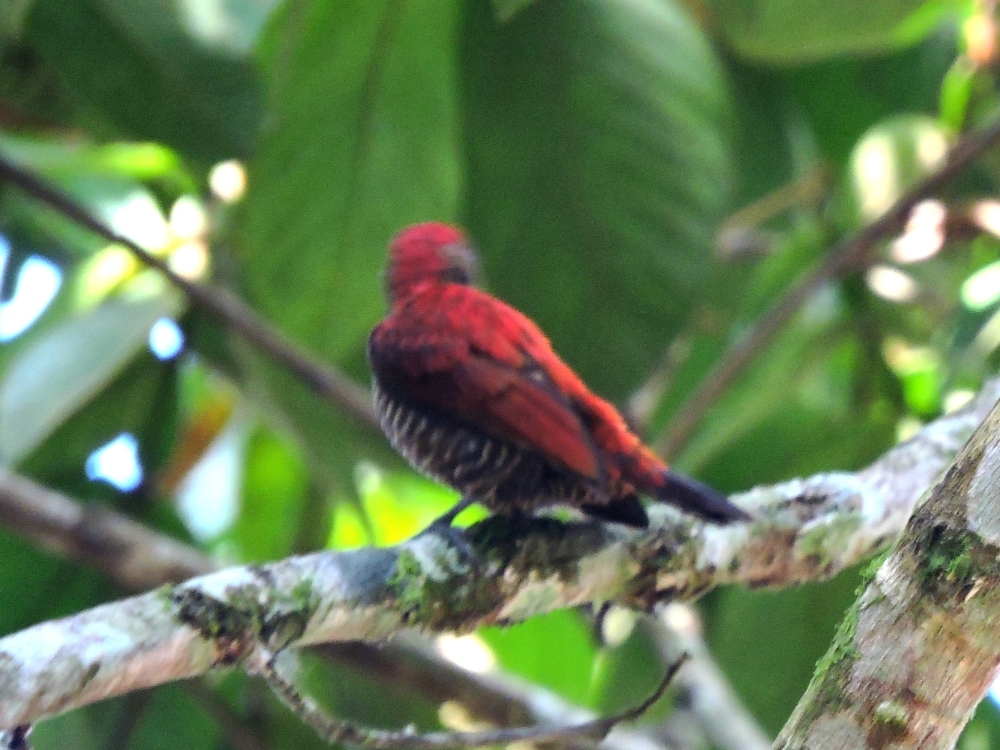
Blue-Throated Piping-Guan was a bird I could easily have overlooked, so I was pleased to see this one at the CSNR.
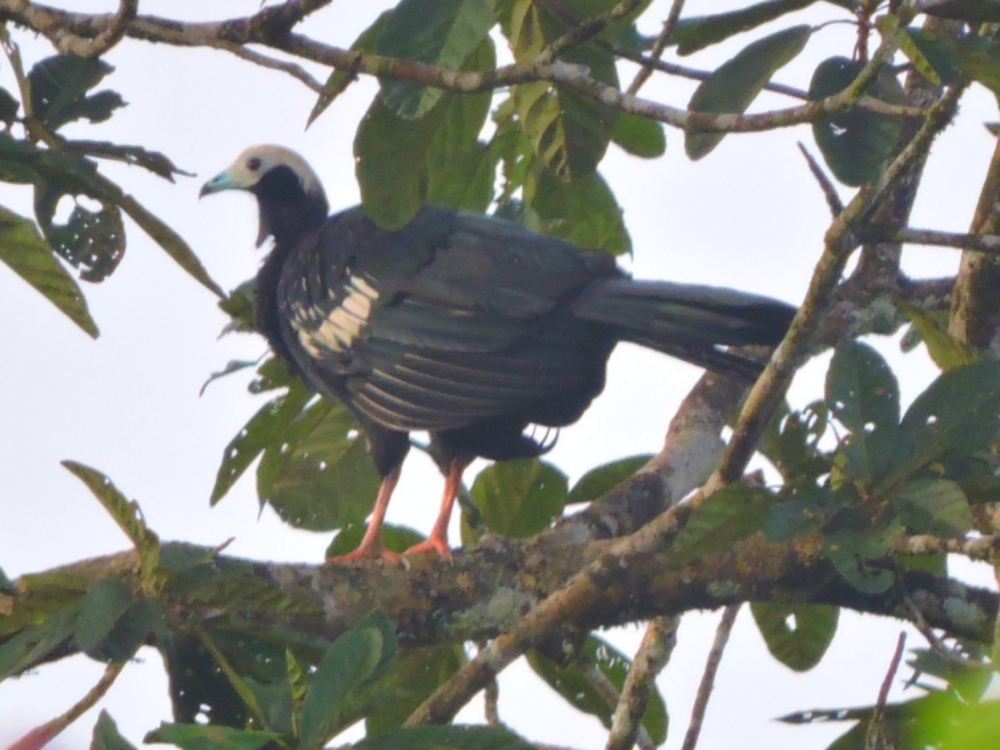
Early morning was the best time to see White-Throated Toucan, though the light was usually not very good at that time.
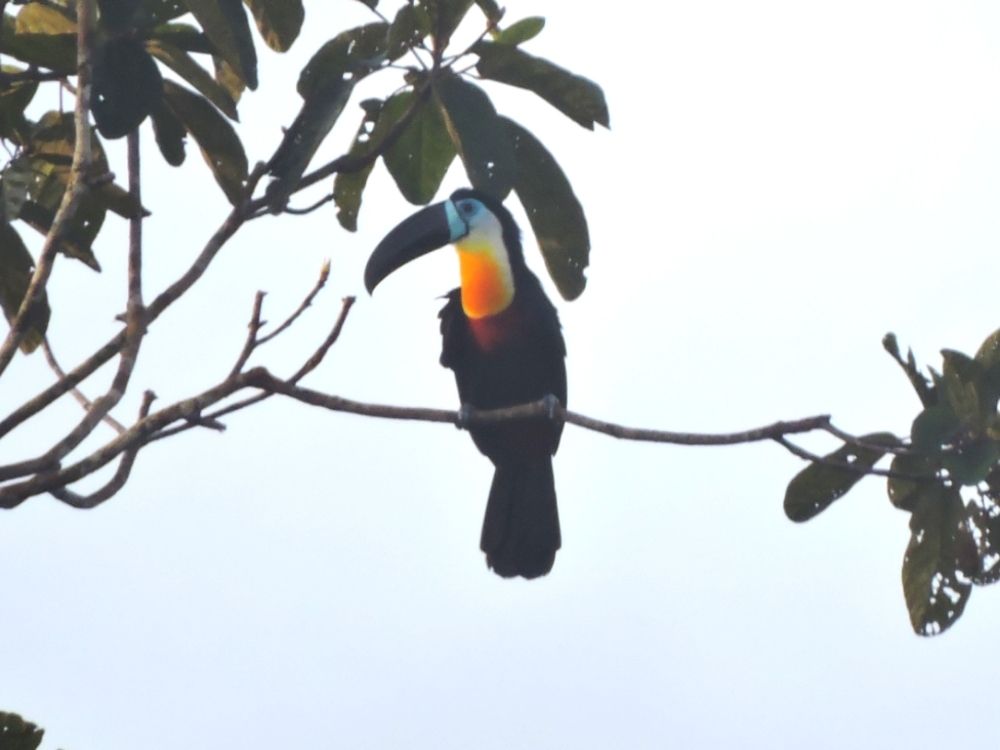
I really liked the way Striped Cuckoo reminded me of a small version of the Roadrunner I saw earlier in the Tour.
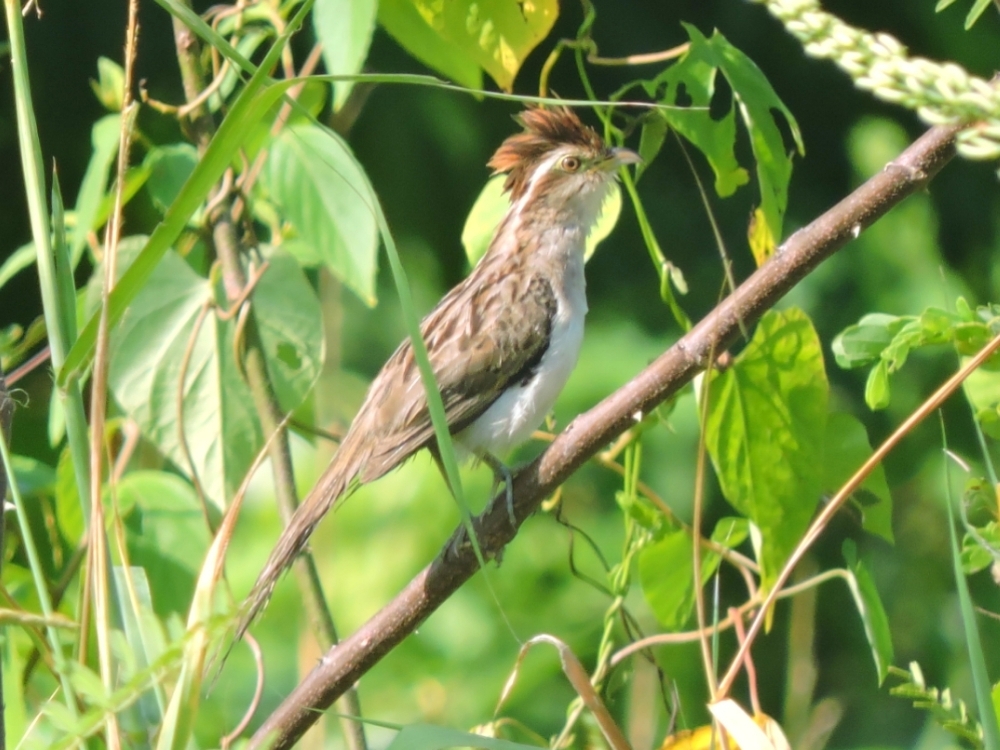
I saw American Pygmy Kingfisher only one minute after arriving at Peperpot, which was very statsfying, since now I have finally seen all six Western Hemisphere Kingfishers.
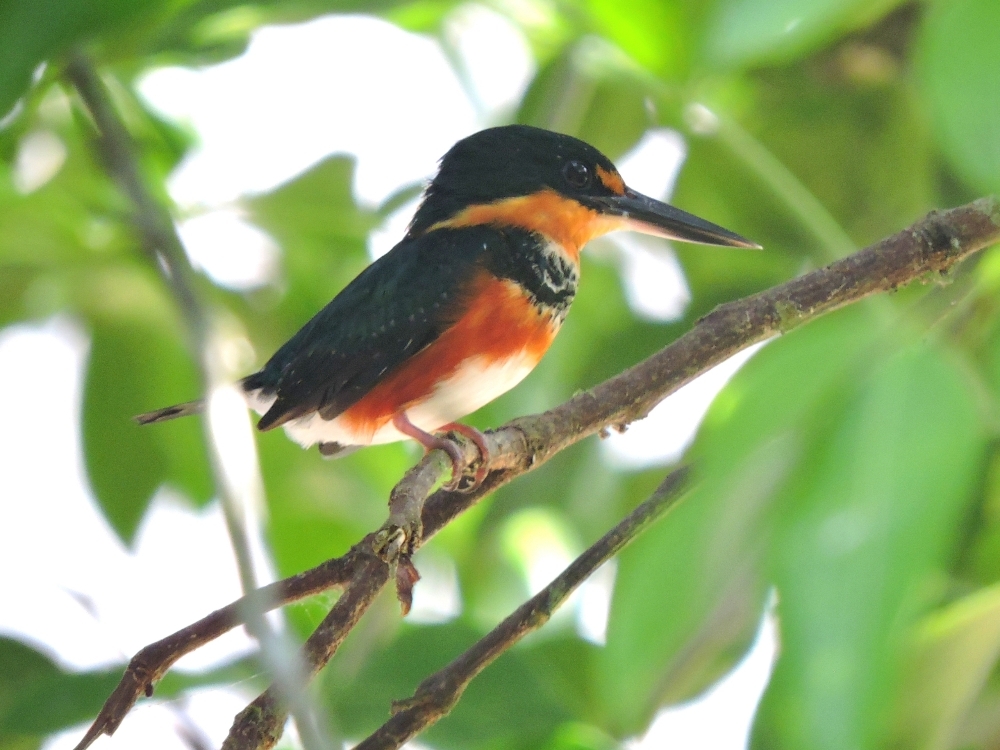
One type of parrot that presented itself for convenient viewing was Red-Fan Parrot, a species I had hoped to see. Unfortunately, none decided to unfurl their unique red crests for me to appreciate.
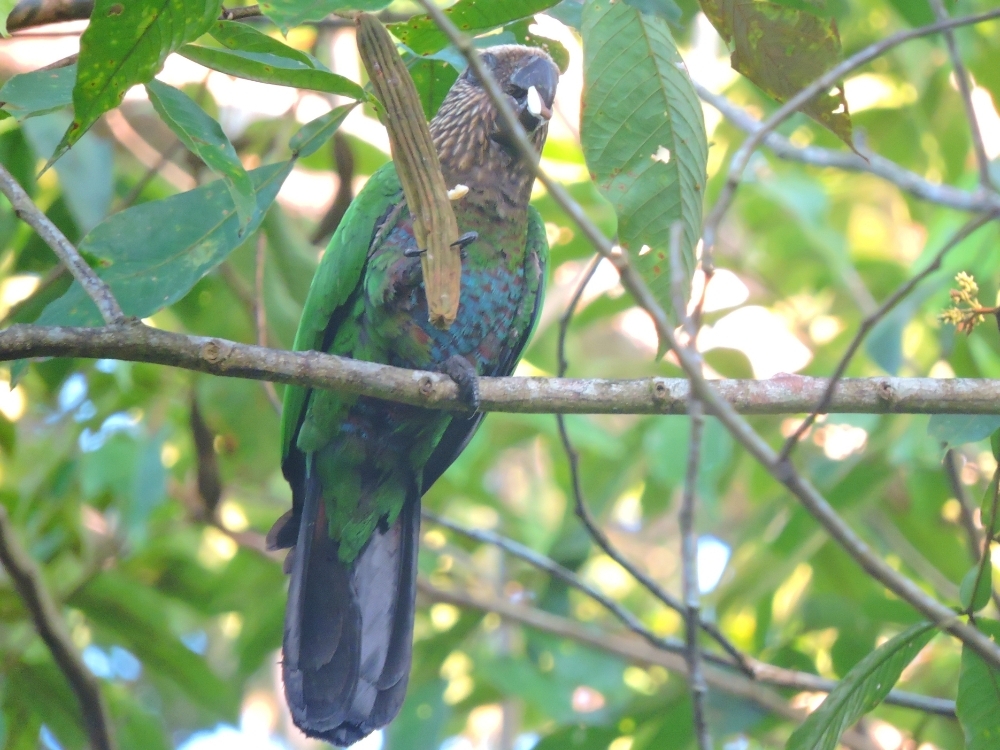
I really enjoy seeing Jacamars, and an early morning view of Yellow-Billed Jacamar in the CSNR was a nice treat.
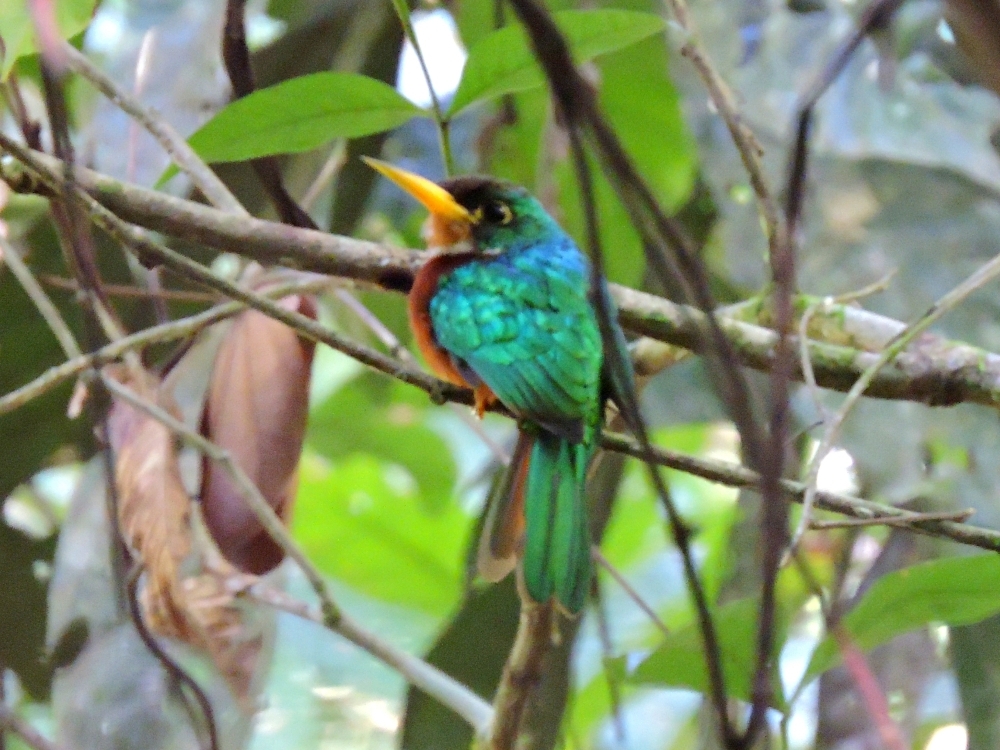
While all of those were excellent birds, the top sighting of this section really could not be contested, and it required a little extra effort to achieve. While the rest of the people from my tour group in the CSNR were having breakfast, I made arrangements to leave early and extend the day's already-lengthy hike a little further, in order to visit the lek of a special bird. That was none other than the amazing Guianan Cock-of-the-Rock, and it was worth the traverse of the little-used, and somewhat rough, trail. Once at the lek, ten proud males of this species nonchalantly went about thier business unconcerned with my presence, allowing close and lengthy observations. That, in fact, may have been one of the top wildlife sightings of my lifetime.
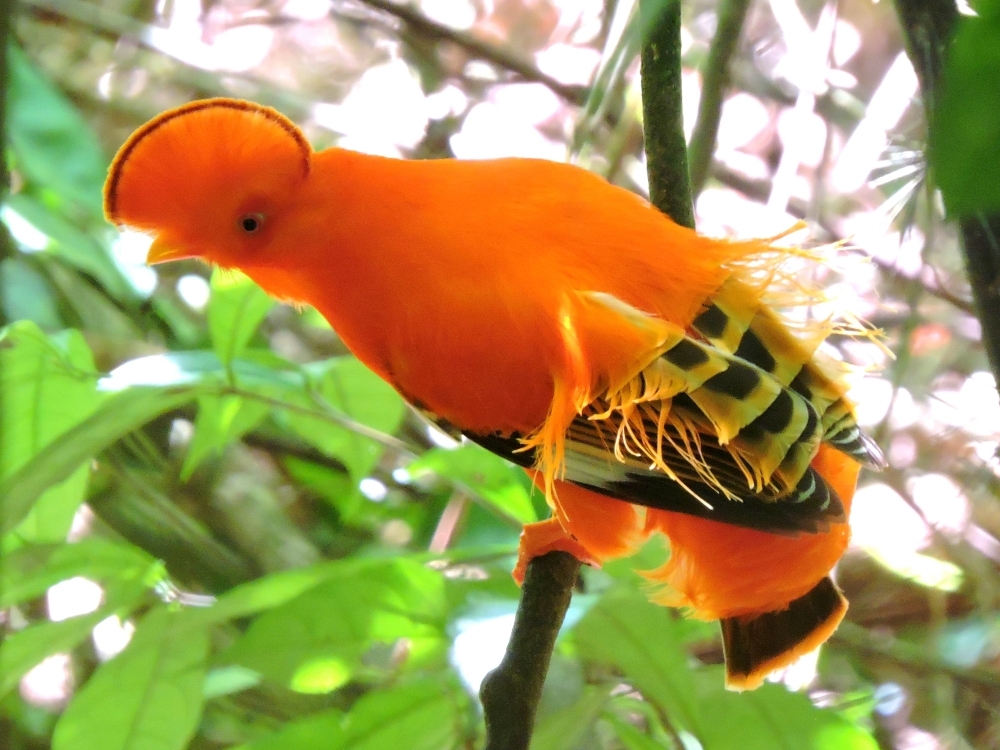
The other new birds of this section, no less appreciated, were: Fulvous Whistling Duck, Marail Guan, Gray-Winged Trumpeter, Greater Yellow-Headed Vulture, Lesser Yellow-Headed Vulture, Rufous Crab-Hawk, Gray-Lined Hawk, Black Caracara, Little Cuckoo, Green Aracari, Long-Tailed Hermit, Variegated Flycatcher, Olivaceous Flatbill, Pale-Breasted Thrush, White-Crowned Manakin, Screaming Piha, Swallow-Winged Puffbird, White-Banded Swallow, Black-Collared Swallow, Black-Tailed Tityra, and Buff-Breasted Wren.
I am hopeful that I have now established some birding momentum, and that I will be able to keep up the quality of my sightings in the next sections.